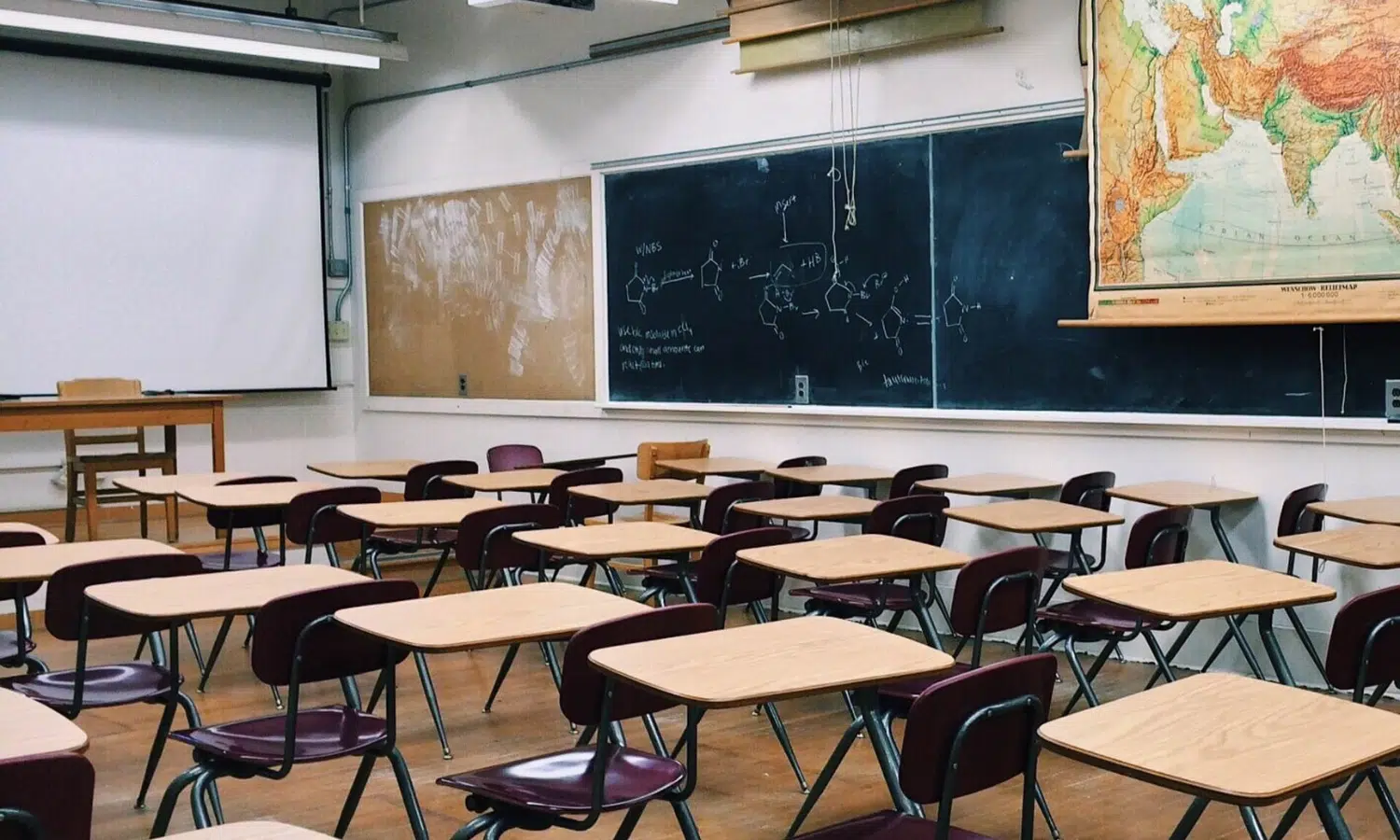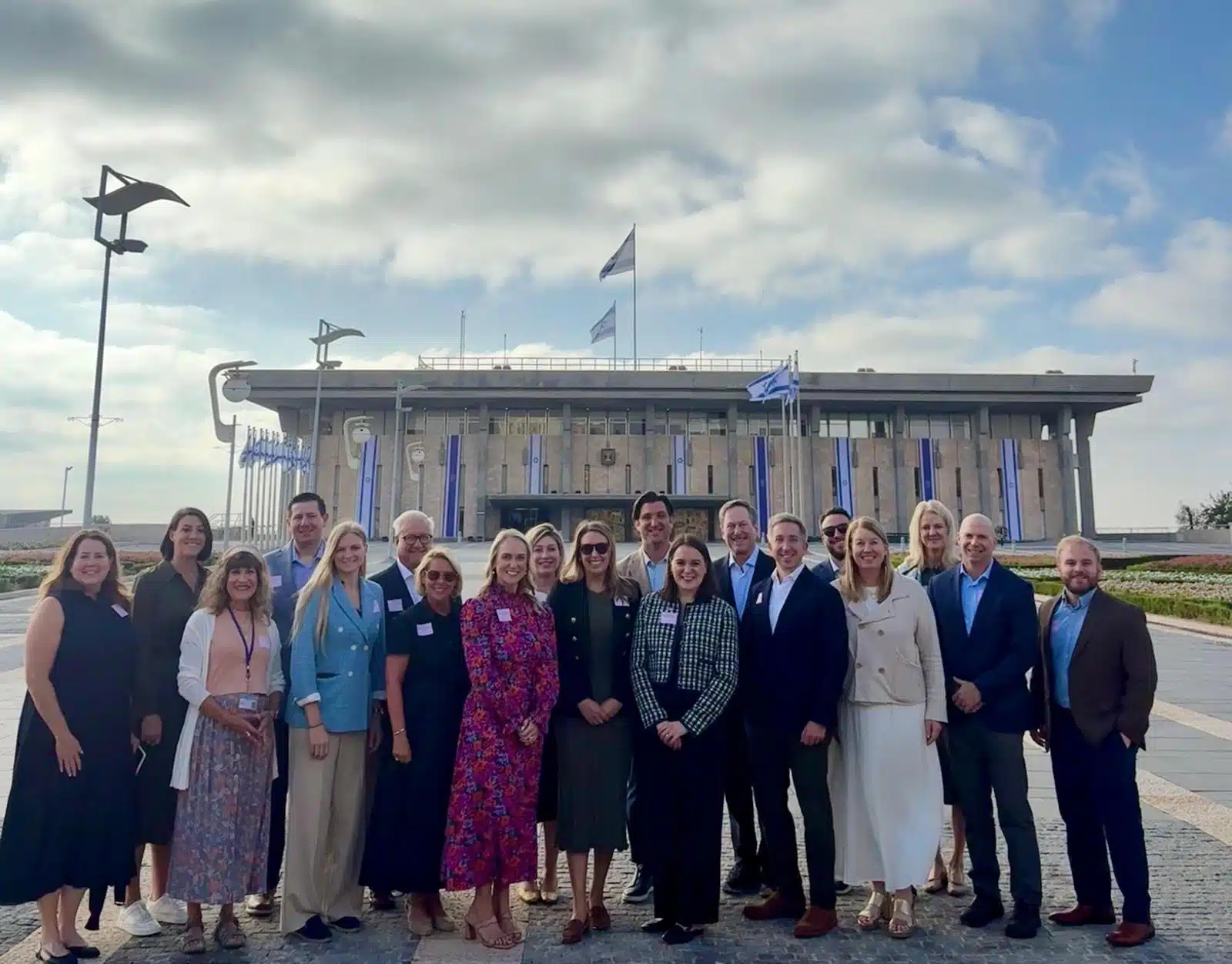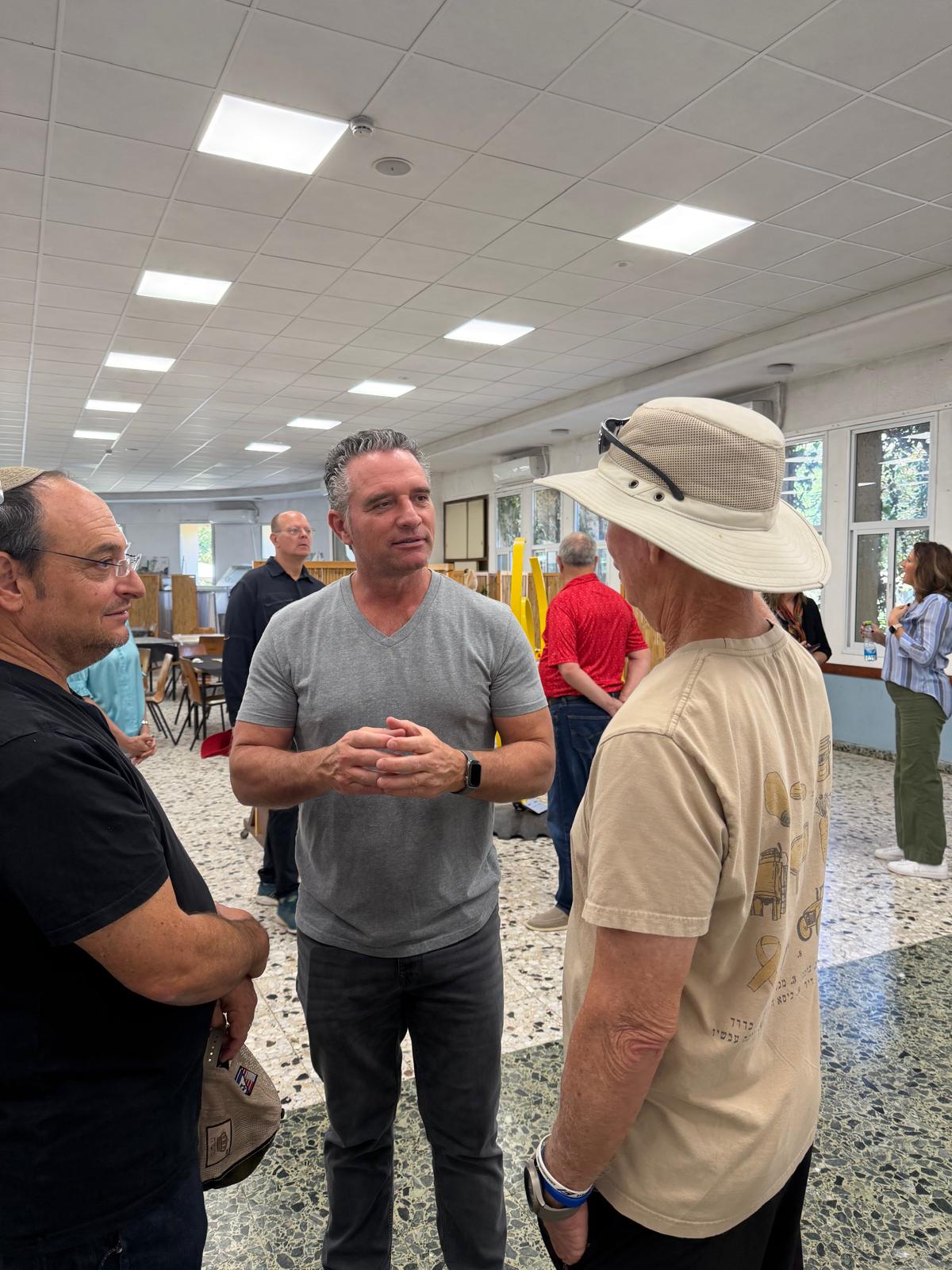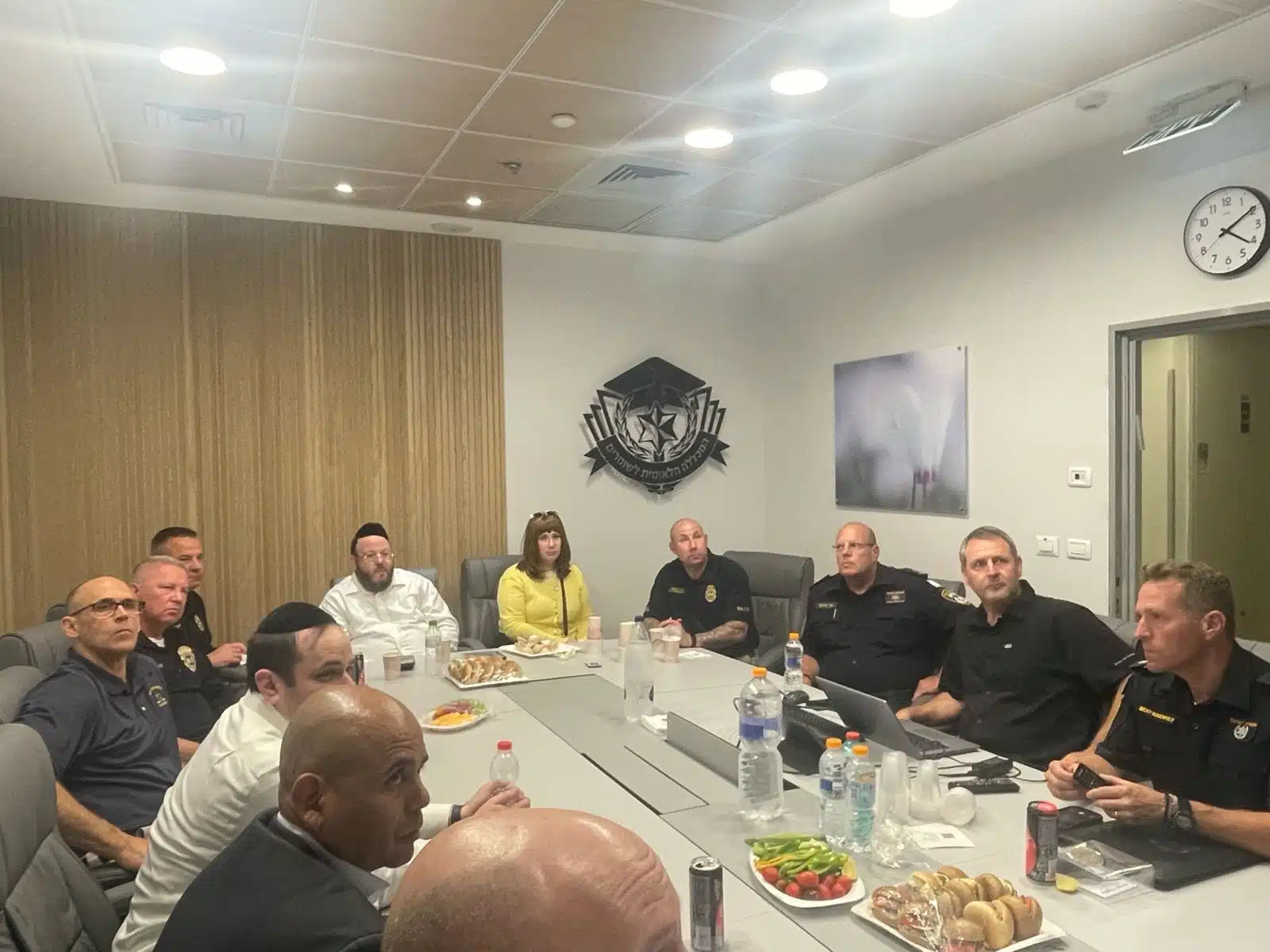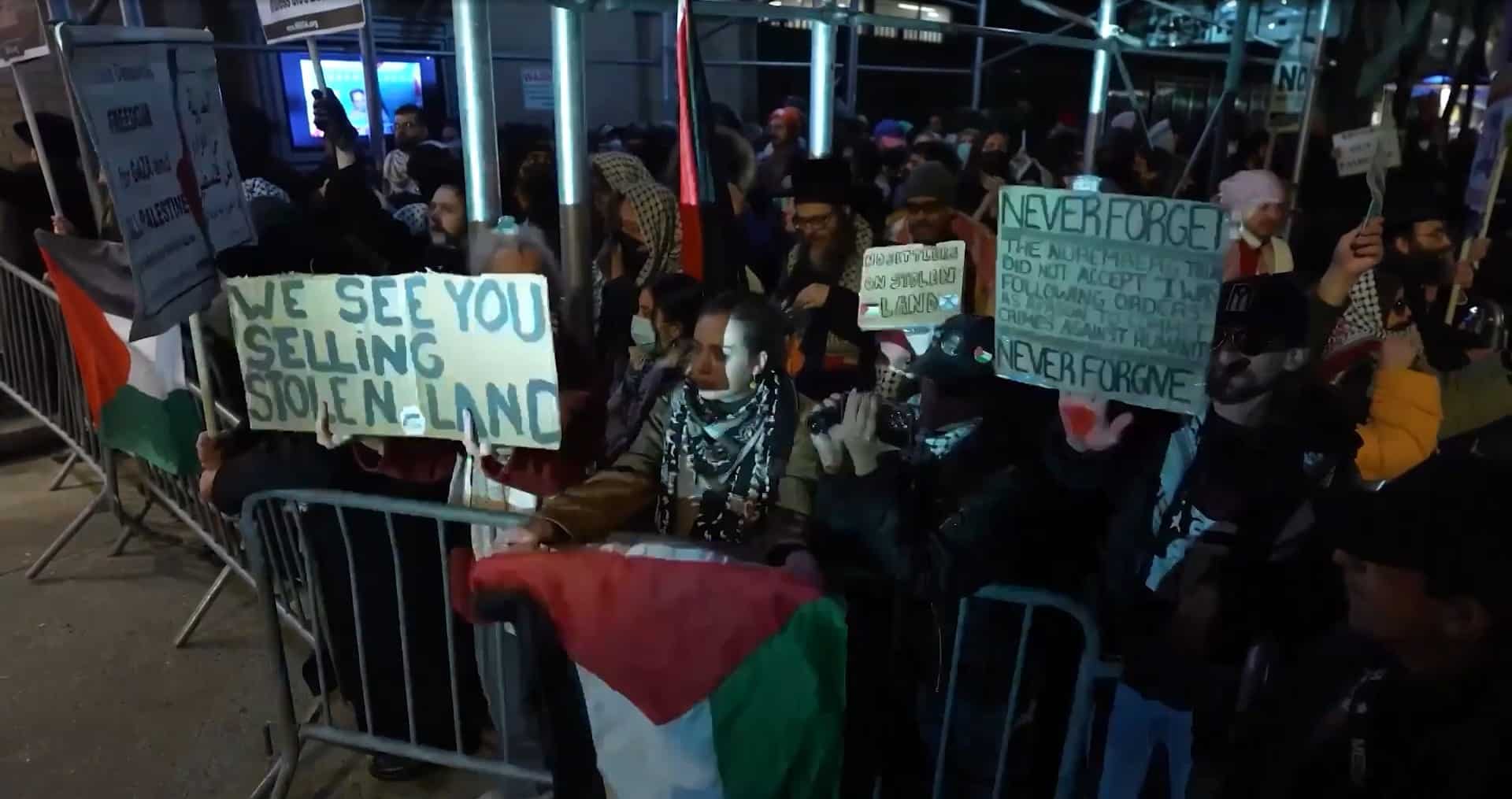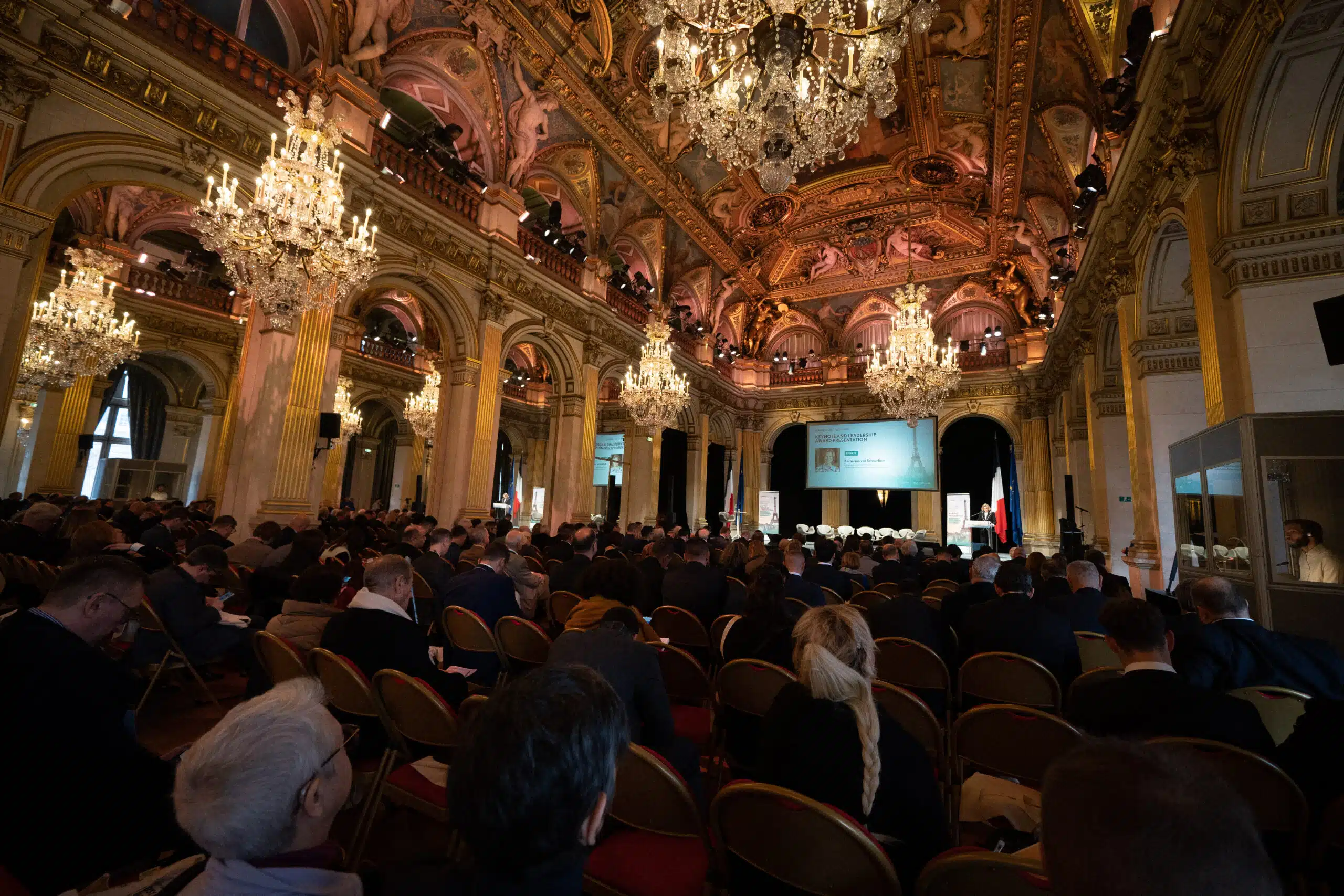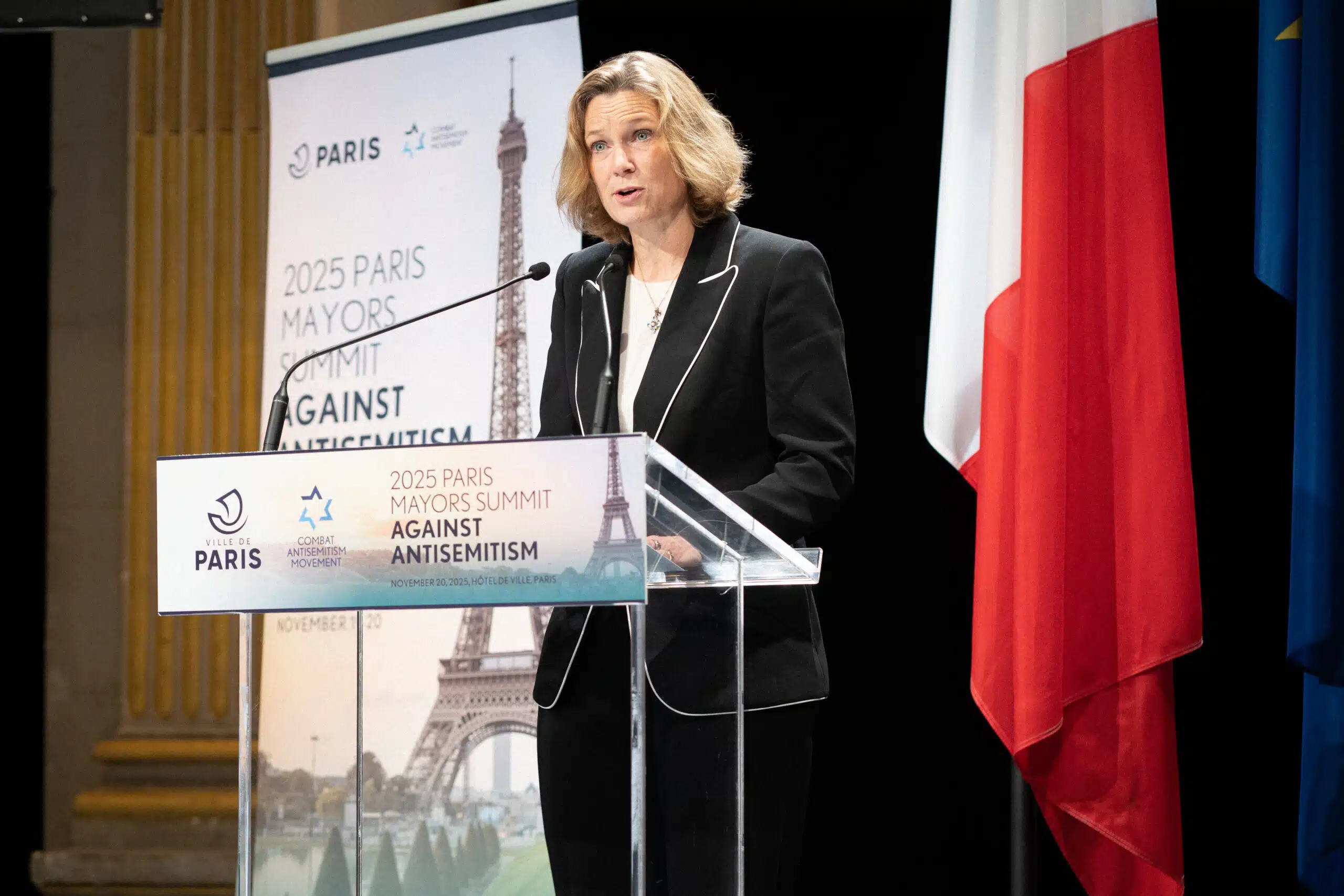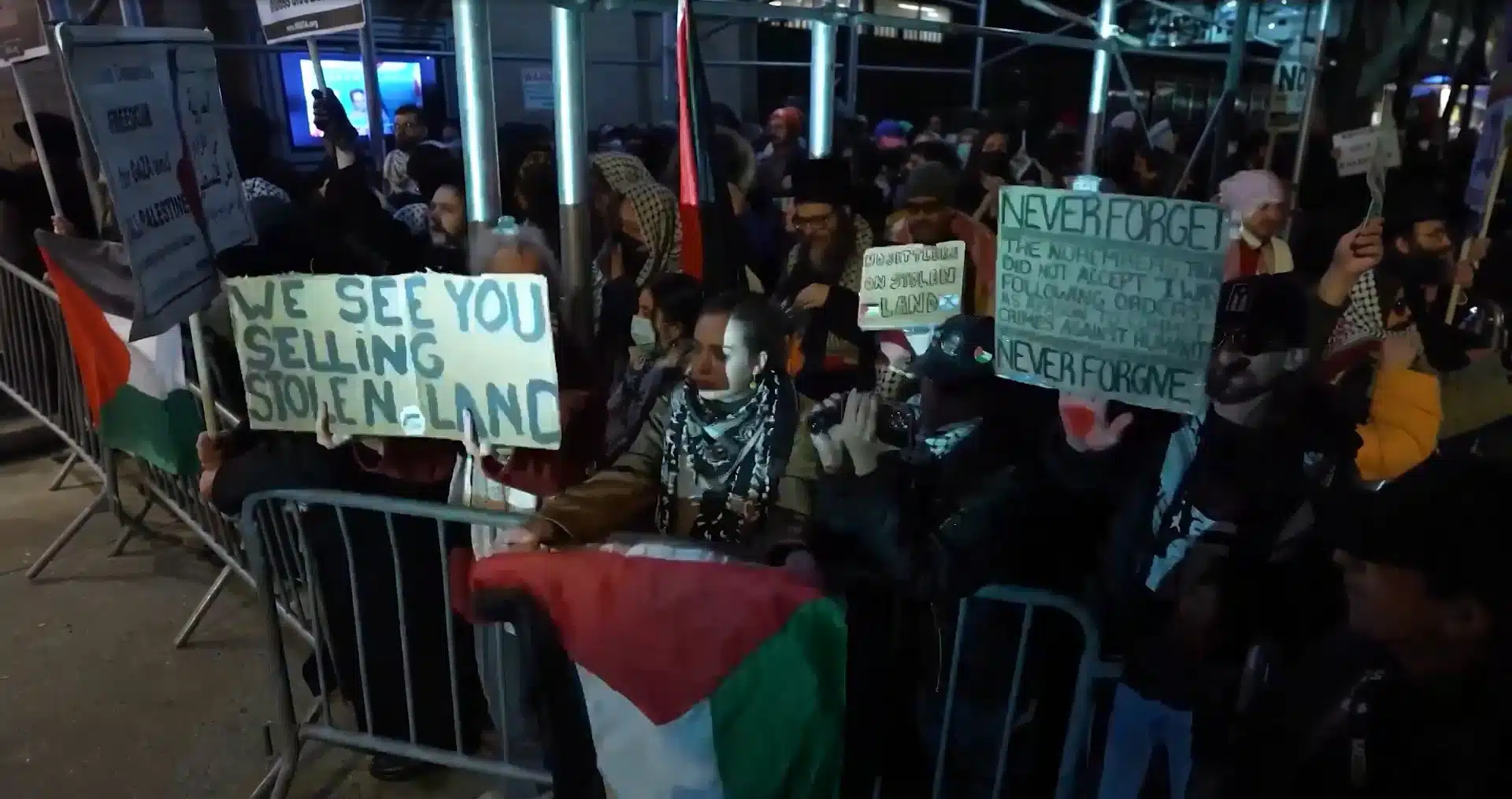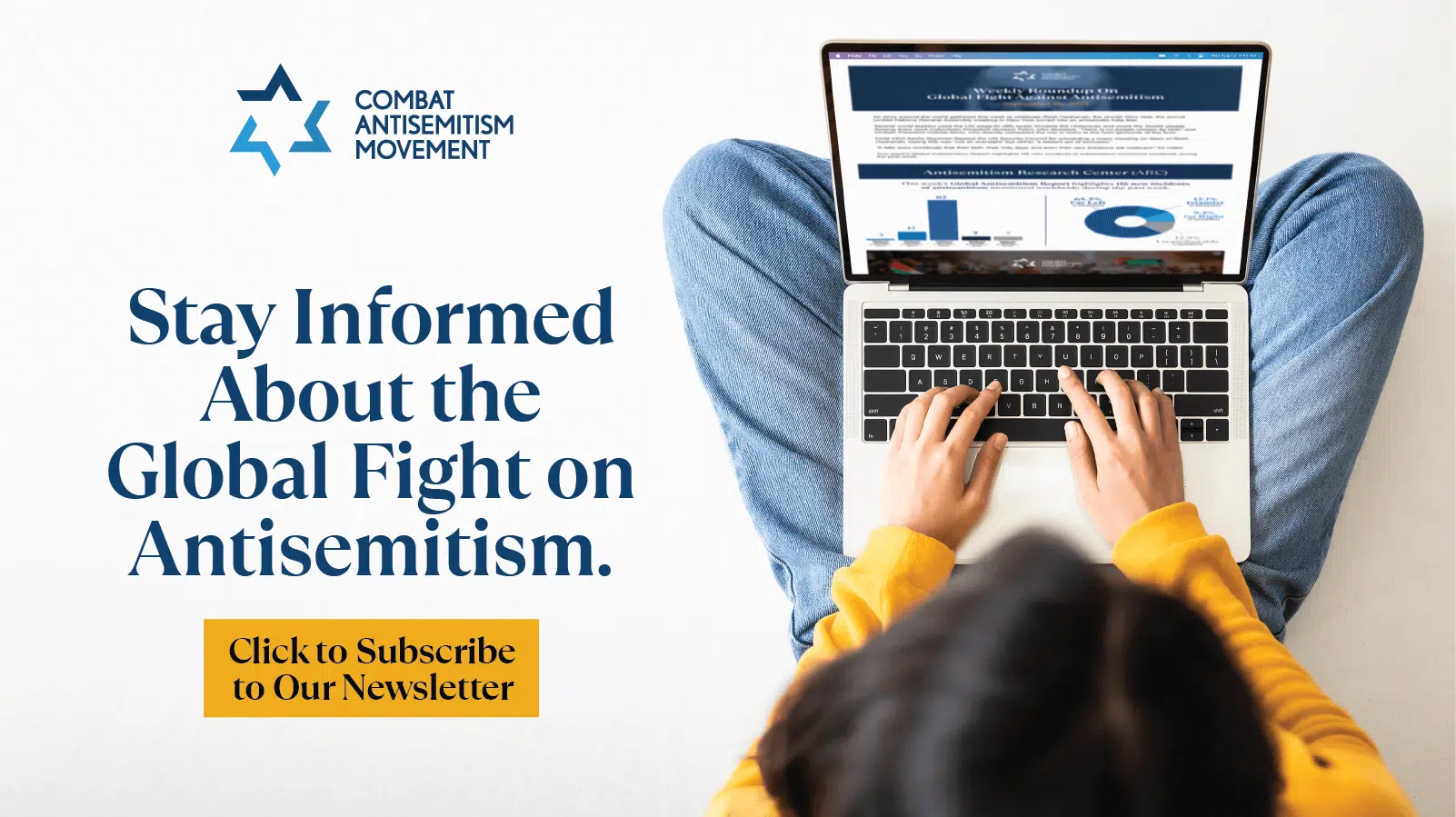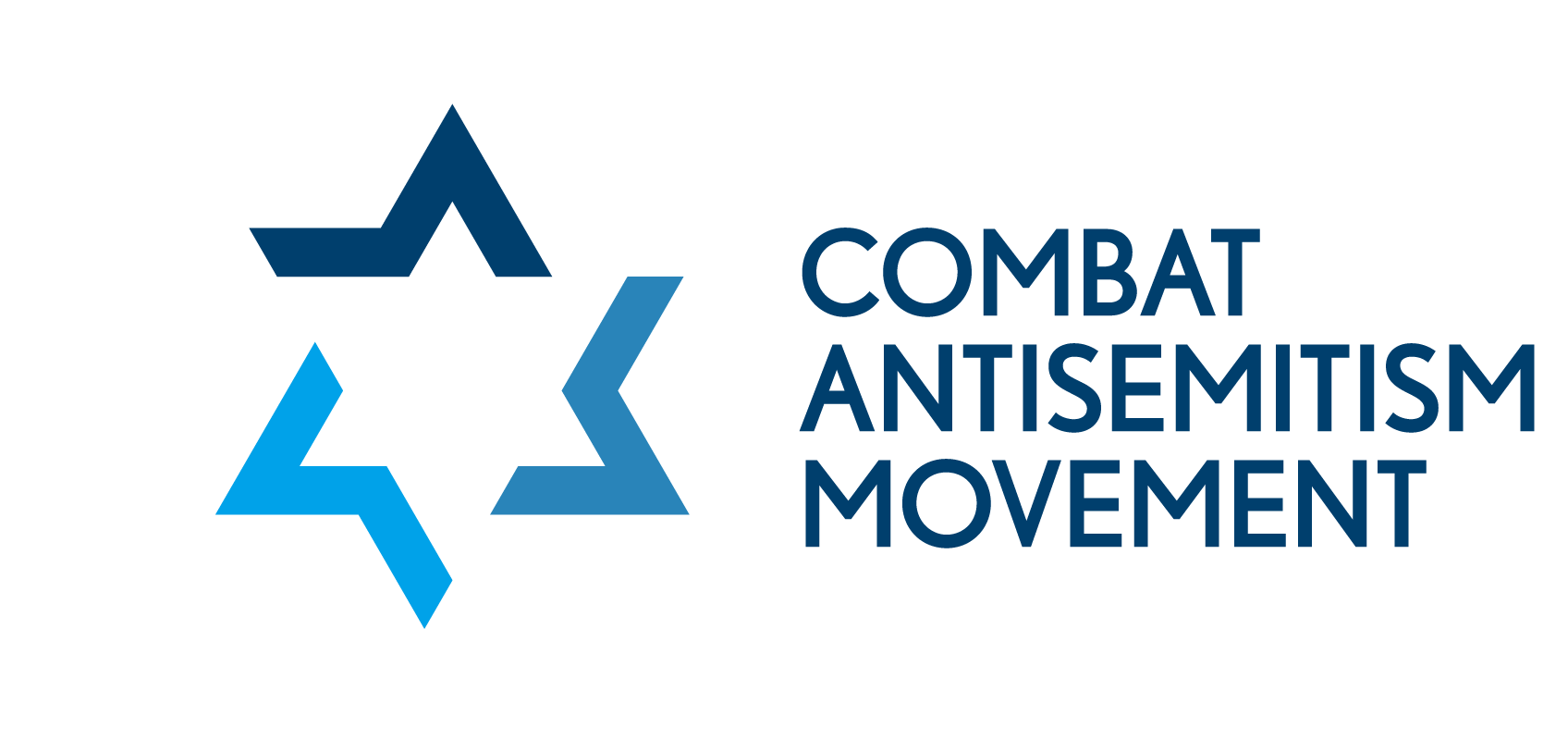|
Getting your Trinity Audio player ready...
|
Across the United States, classrooms have emerged as a front line in the battle against rising antisemitism. The deep entrenchment of anti-Israel ideology has long been evident at colleges and universities — and the same patterns are now taking root in K–12 schools. From biased textbooks to teachers pushing politicized agendas, false narratives about Jews and Israel are increasingly shaping what young students learn every day.
The Combat Antisemitism Movement (CAM) recently spoke with Ari Brown, Education Analyst at the Committee for Accuracy in Middle East Reporting and Analysis (CAMERA), about how these ideas spread — and what can be done to stop them.
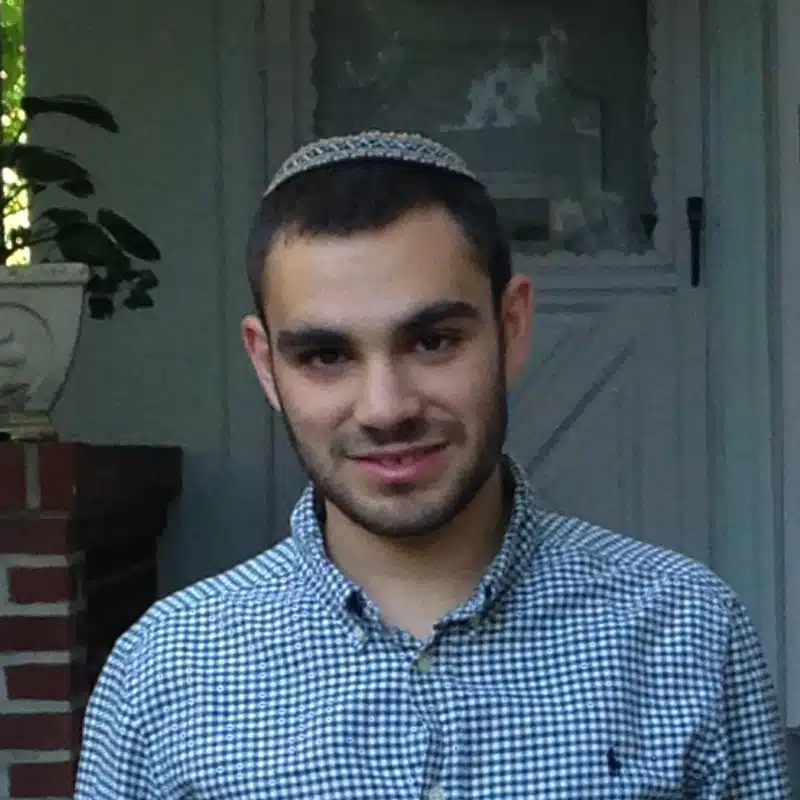
When did CAMERA first detect antisemitic narratives in K–12 education, and what convinced you the problem was systemic rather than isolated?
CAMERA’s work in K–12 began over a decade ago in Newton, Massachusetts — a city with a large and active Jewish population — where a public-school teacher presented the Arab–Israeli conflict solely through a pro-Palestinian lens. Brown said CAMERA investigated the case and published a monograph, titled Indoctrinating Our Youth: How a U.S. Public School Curriculum Skews the Arab-Israeli Conflict and Islam, revealing that the problem was not isolated but part of a deeper pattern of biased and misleading classroom materials.
CAMERA’s research into the Newton controversy exposed how course materials framed Israel as a colonial aggressor and omitted Jewish history entirely — a revelation that marked the start of its K–12 education initiative.
Since then, CAMERA has built a two-pronged strategy. The first is reactive: challenging inaccurate curricula and pressing schools to make corrections, even when bureaucracies drag the process out for months. The second is proactive: developing supplemental curricula on Jewish and Israeli history, vetted literature recommendations, critical book reviews, and concise primers on issues such as “settler colonialism” and false “genocide” accusations.
“These materials aren’t talking points,” Brown emphasized. “They provide real context and understanding, equipping teachers and students to push back against misinformation.”
Teachers, he noted, have been receptive. “Many have welcomed our resources as a way to bring more depth and diversity into their classrooms,” Brown said. The ones who disagree generally ignore us, which shows our work is reaching those who genuinely want accuracy and balance.”
California’s ethnic-studies mandate has sparked controversy, particularly around frameworks advanced by groups such as the Arab Resource and Organizing Center (AROC), which critics say embed antisemitic narratives into curricula. From your perspective, how do these frameworks operate as vehicles for antisemitism, which organizations are driving these agendas most forcefully, and are you seeing similar models spread beyond California into other states?
“California really operates in its own world,” Brown said. CAMERA was active early in exposing antisemitic elements in the state’s ethnic-studies curriculum, though local groups led much of the pushback. Some progress was made — the most extreme material was removed — but the broader ethnic-studies framework, rooted in an oppressor-versus-oppressed lens, has spread nationwide.
“At national conferences, most sessions are rooted in this DEI/ethnic-studies framework,” he explained. “That’s what teachers are being exposed to, and it shapes what ends up in their classrooms.” Israel often becomes the target. Groups such as Teach Palestine and PARCEO (a radical publisher tied to Haymarket Books) distribute anti-Israel teaching materials, while Jewish Voice for Peace (JVP) produces its own classroom resources.
One of the most troubling examples came from the Massachusetts Teachers Association (MTA), which worked with JVP and anti-Israel professors to create resources featuring antisemitic imagery — including a Star of David made of folded dollar bills. “That wasn’t just anti-Israel,” Brown stressed. “That was classic antisemitism.”
CAMERA has mobilized parents and supported pro-Israel candidates for school boards. In Brookline, new members advanced a resolution barring the MTA’s resources.
“These frameworks aren’t limited to California,” Brown warned. “They pervade conferences and teacher-training sessions across the country. That’s why we equip teachers with accurate resources and mobilize communities to engage in the political process. When pro-Israel voices win seats on school boards, they can block antisemitic content before it enters classrooms.”
Teacher-preparation programs and professional development sessions often encourage educators to see themselves as activists rather than neutral instructors, while teachers’ unions and caucuses amplify these agendas. How deeply is this activist orientation entrenched in teacher training, which institutions, unions, and NGOs are most influential in embedding anti-Israel ideology into pedagogy, and how aware are parents of the extent to which their children’s teachers are being shaped by this framework?
“If you look at publishers like Parseo, affiliated with Haymarket Books, their training programs make it clear: teachers must be activists,” Brown said. “Their role isn’t to teach subject matter neutrally, but to mobilize students for radical change.”
This approach, rooted in post-colonial theory and the work of Edward Said, dismisses traditional scholarship as “colonial.” Instead of fostering inquiry, it advances a predetermined ideological agenda — frequently framing Israel as a colonial oppressor.
Unions and professional organizations reinforce this message. “The National Council for the Social Studies (NCSS), National Council of Teachers of English (NCTE), and even the American Library Association (ALA) all platform activist pedagogy,” Brown explained. While not every teacher embraces it, the orientation is widespread enough to shape how new educators see their role.
Since October 7, many Jewish parents have become more aware of how politicized classrooms are. Elite private schools, Brown warned, may be even more vulnerable than public schools. “These institutions pride themselves on being ‘cutting-edge,’ and they’ve adopted activist pedagogy wholesale,” Brown said. “Many of the students in anti-Israel campus encampments were first exposed in prep schools like Horace Mann.”
Major curricular organizations such as Rethinking Schools and the Zinn Education Project promote materials that equate Israel with apartheid. How widespread are these materials, how do they enter mainstream classrooms, and do you see evidence of coordination between these organizations and broader activist networks?
“These organizations are highly influential,” Brown said. “They coordinate, appear together at conferences, and operate within the same activist networks.” Because teachers have wide latitude in choosing resources, activist materials often spread through professional conferences.
National organizations amplify their reach. “The NCSS, NCTE, and ALA don’t officially mandate anti-Israel content, but by showcasing it, they normalize it,” Brown noted.
At the 2023 NCTE conference, CAMERA staff promoting alternative literature reported significant pushback when they distributed reviews of books like Homeland, which erase Jewish presence until Jews appear as villains. “The reaction showed how threatened activists were by even a small alternative voice,” Brown said.
While English-education spaces such as NCTE are more fully captured, he added, social studies spaces like NCSS still have room for contestation. “The activist voices dominate, but not absolutely,” Brown said.
CAMERA’s Literature Project shows that even widely used classroom novels and reading lists erase Jewish history. What patterns have you identified in these works, and how have teachers and parents responded to your findings?
“The clearest pattern is erasure,” Brown said. Novels like Homeland present the Middle East as entirely Arab until Jews appear as destructive intruders. Others portray the conflict solely through a Palestinian nationalist lens. “The effect is to frame Jews as foreign oppressors and Israel as illegitimate,” Brown pointed out.
While no district has formally dropped books because of CAMERA’s reviews, parents have used the critiques to challenge biased titles. Teachers increasingly rely on CAMERA’s recommended reading list. Nearly 400 educators have registered to download CAMERA’s curriculum, spanning public, private, Jewish, Christian, and homeschool settings.
The institute also tailors materials directly. Brown cited working with a Maryland teacher to adapt a high-school lesson for elementary students. “That kind of collaboration ensures our resources aren’t just downloaded, but actively used,” he said.
Groups such as Educators for Palestine and union caucuses openly share toolkits, lesson plans, and “teach-in” resources across districts. Are these simply loose grassroots collectives of teachers, or do you see a more organized, national or even international campaign behind them?
“These aren’t just grassroots collectives,” Brown said. “They’re coordinated and funded.”
He pointed to CAMERA’s exposé of the Choices Curriculum, once affiliated with Brown University. Its Israel section was shaped under Beshara Doumani, then president of Birzeit University in Ramallah — which has a long history of Hamas influence. “You’re literally bringing someone from Ramallah to shape a U.S. curriculum,” he said.
While its Vietnam War module included multiple perspectives, its Israel section was “terrible.” Brown University later ended its affiliation with the program. “This is how international coordination works,” Brown explained. “The same networks and players we see on campuses — JVP, unions, NGOs — are also shaping K–12.”
Some schools have implemented simulations like “Israeli apartheid” role plays, which force students to act out political conflicts. How common are these activities, who promotes them, and what impact do they have on how children perceive Jews and Israel?
“These incidents aren’t everyday occurrences but are more common than they should be,” Brown said. In Northern Virginia, a middle school displayed a Palestinian flag alongside a board that included Adolf Hitler. In San Francisco, activist teachers have run performative exercises resembling campus “die-ins.”
Brown warned that while such stunts provoke outrage, subtler bias is more dangerous. “When a teacher quietly frames the conflict as Israel = oppressor, Palestinians = victims, that’s harder to detect, harder to challenge, and ultimately more effective in embedding antisemitic ideas,” he said.
At a U.S. congressional hearing in September, Parents Defending Education testified that some districts accept grants from Qatar Foundation International (QFI), a U.S.-based nonprofit funded by Qatar Foundation, established by Qatar’s ruling family. From your perspective, how widespread is this type of foreign or outside influence, and are these relationships transparent to parents and school boards, or are they often concealed through nonprofit status and educational partnerships?
“These relationships are not transparent,” Brown said. Parents rarely know their schools are receiving funds or materials from QFI, a U.S. nonprofit funded by Qatar’s ruling family.
He described Qatar’s approach as soft power — funding education, hosting the World Cup, and embedding itself in cultural institutions. In his view, the effect is to advance Arab-nationalist and Islamist narratives hostile to Israel, and materials he reviewed reflected a Sunni-centric presentation of Islam. “Even if they frame it as cultural outreach, what it buys is influence — and it’s reaching K–12, not just universities,” he said.
Parents often report antisemitic curricula or harassment, yet administrators and school boards rarely intervene. Why do you think this inaction persists — is it ideological sympathy, fear of political backlash, or bureaucratic inertia? Have there been cases where exposure forced a school board or curriculum provider to reverse course, and how much does the response differ between districts depending on local politics or community pressure?
“All of the above,” Brown said. Bureaucracy slows corrections; ideology entrenches bias; fear of backlash makes boards hesitant.
But change is possible. In Brookline, pro-Israel candidates helped block antisemitic resources. In New York City, parents pressured New Visions for Public Schools to withdraw and revise a biased Nakba module in 2023. “Because their curriculum is used citywide, fixing that one module made a system-wide impact,” Brown explained.
“The deciding factors are local politics, persistence of parents, and whether pro-Israel voices have a say in governance,” he said.
Looking ahead, what gives you the most hope this tide can be reversed? And what should parents, educators, and lawmakers do right now to ensure Jewish students can learn in an environment free from bias and hostility?
“Sometimes I feel pessimistic about where the country is headed,” he admitted, citing the broader rise in antisemitism. “But in education, I’m more optimistic.”
At conferences, he expected hostility but found curiosity instead. “Teachers were genuinely excited to see materials that brought a Jewish lens into the classroom,” Brown said. “It showed me that many aren’t activists — they’re educators who want balance.”
He stressed that public opinion, while troubling, is not fixed. “People aren’t wedded to negative views of Israel.,” he said. “Minds can change if they’re shown another perspective.”
The path forward, Brown argued, is clear: parents must stay engaged, educators need reliable resources, and lawmakers should demand transparency. “Of course there are serious problems,” he concluded. “But countless teachers are open. They want help. And that’s where we can make a difference.”
As CAMERA’s work shows, combating antisemitism in education demands vigilance at every level — from parents and teachers to policymakers. The classroom is where future generations form their understanding of Jews and Israel. Ensuring truth and balance there is not just an educational imperative, but a moral one.

